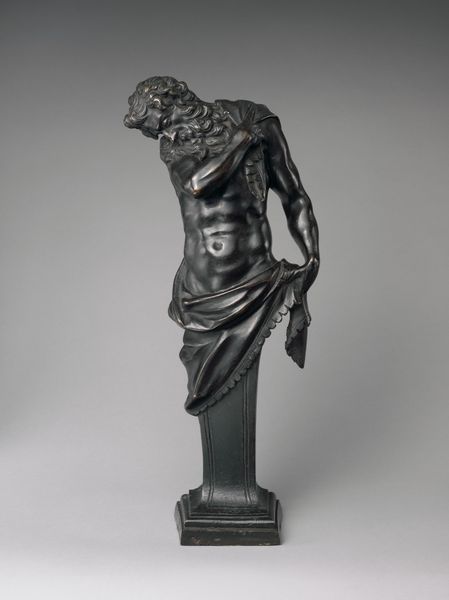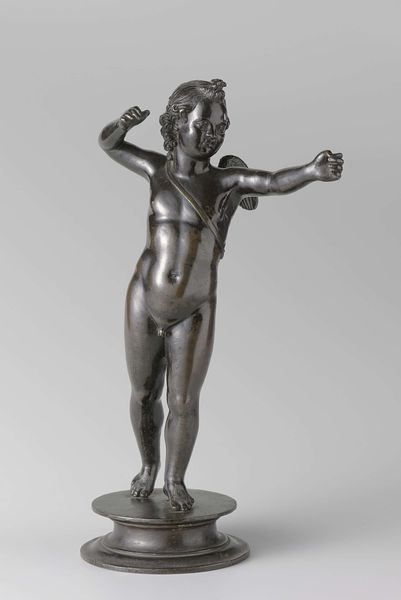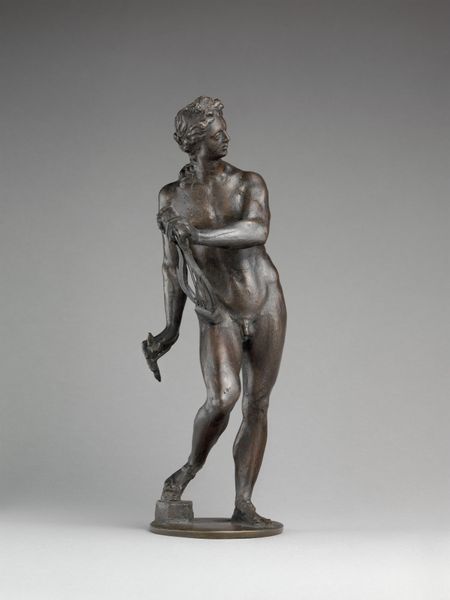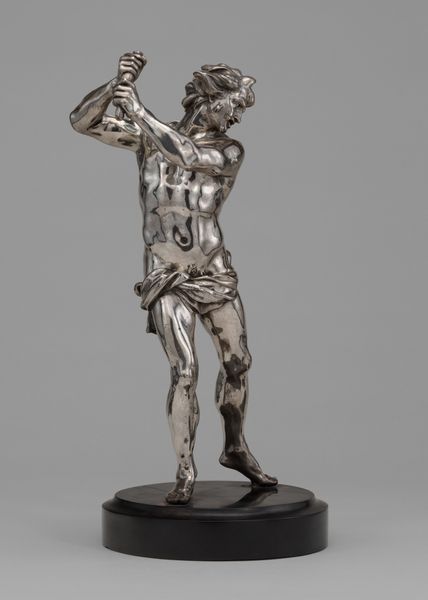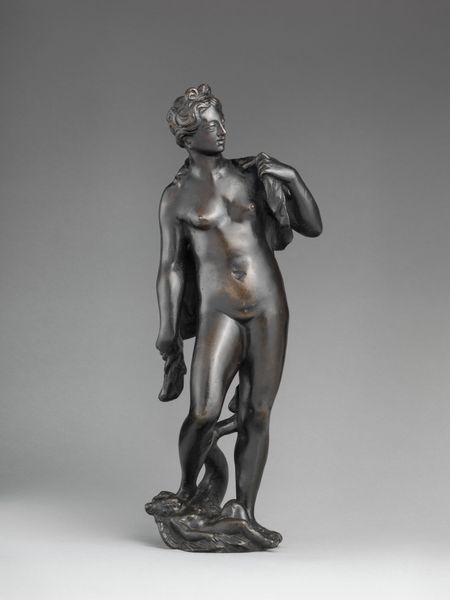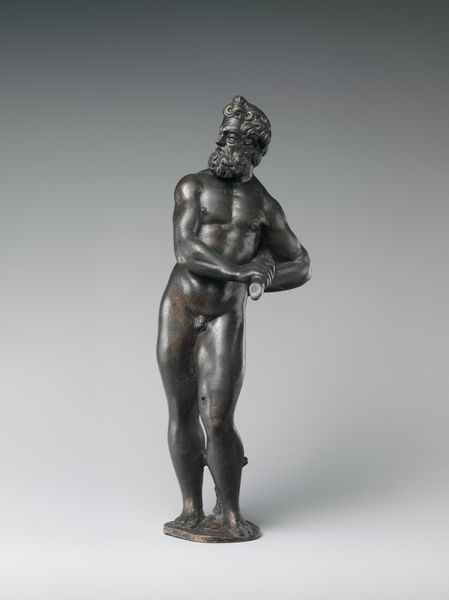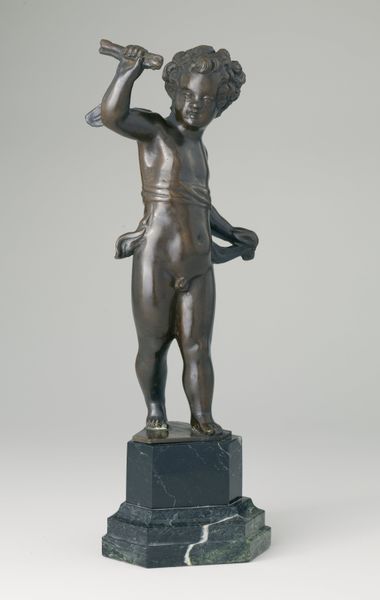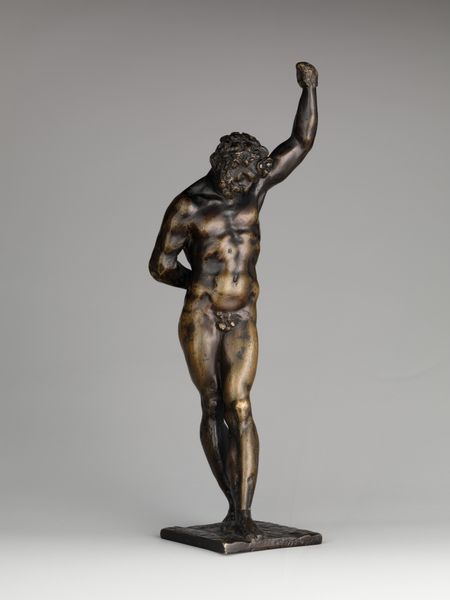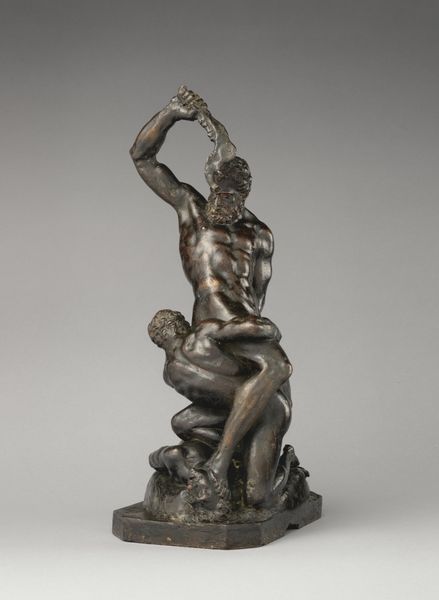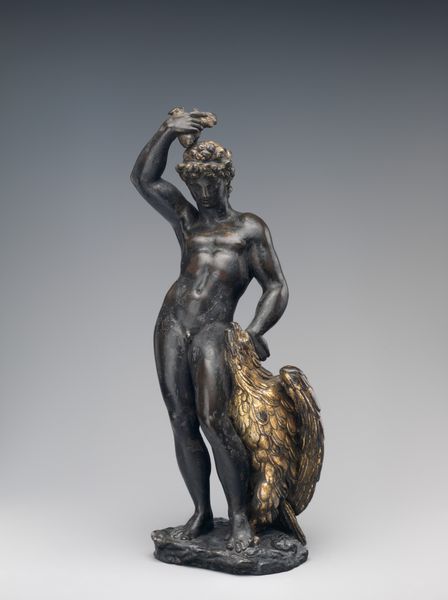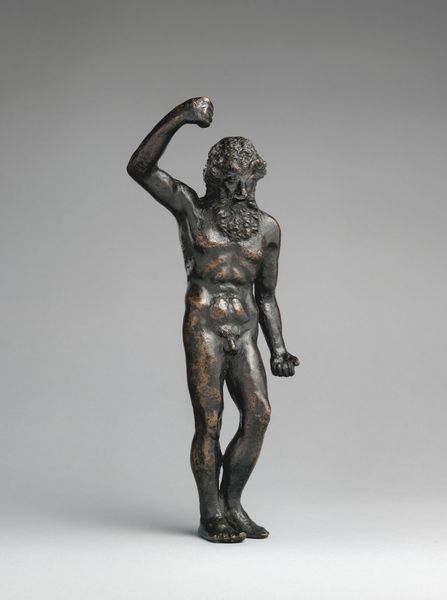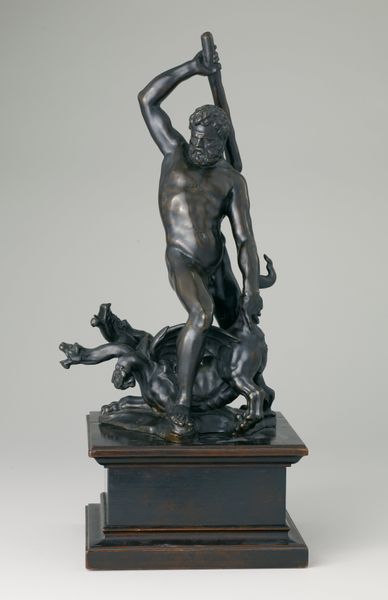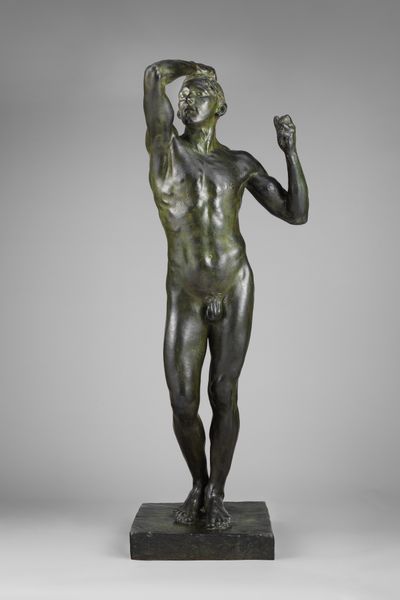
bronze, sculpture
#
allegory
#
sculpture
#
bronze
#
mannerism
#
figuration
#
sculpture
#
nude
Dimensions: height 157 cm, width 88 cm, depth 80 cm
Copyright: Rijks Museum: Open Domain
Adriaen de Vries made this bronze figure of Triton sometime before his death in 1626. The lost wax casting method would have been used to make this sculpture. De Vries would have sculpted the figure in wax, then covered it in clay to create a mold. Molten bronze was poured in, melting the wax and taking its place. After cooling, the mold was broken, revealing the sculpture. The surface of the bronze has a dark brown patina, achieved through the application of chemicals and heat. The creation of bronze sculpture in the Renaissance was a specialized undertaking, typically commissioned by wealthy patrons and executed by highly skilled artisans. De Vries was among the best, achieving fame in his own lifetime. De Vries's Triton demonstrates not only technical mastery, but also a deep understanding of the cultural and social significance of his materials and methods. It challenges us to look beyond traditional distinctions between art and craft.
Comments
rijksmuseum about 2 years ago
⋮
This triton, a sea creature in the retinue of the god Neptune, is one of sixteen sculptures that together once formed part of a monumental fountain. The huge complex stood in front of Frederiksborg Castle in Denmark, but in 1659 Swedish soldiers took the statues as war booty to Stockholm. The triton originally perched on the edge of a basin, and water spouted from the shell he is blowing.
Join the conversation
Join millions of artists and users on Artera today and experience the ultimate creative platform.
